Sheet moulding compound (SMC)
|
BFG Architecture uses a variety of methods to produce FRP parts. Our experienced engineers will select the best method for your project based on factors such as production volume, parts dimensions, budget, and other requirements.
Our extensive experience with press moulding enables us to produce innovative and cost-effective parts for our OEM customers. The process is best suited for large structurally reinforced parts requiring two-sided finish. It is best for moderate to high production quantities of between 5,000 and 10,000 parts per year. Process Sheet moulding compound (SMC) is both a process and reinforced composite material. The composite is a “ready to mould” glass or carbon fibre reinforced polyester material primarily used in compression moulding. The SMC sheets are manufactured in a continuous in-line process by dispersing long strands of chopped glass fibres or carbon fibres on a bath of polyester resin, vinyl ester resin or epoxy resin. It is a flexible, leather-like sheet that is easily cut, weighed and placed in the mould for curing to the desired part configuration. SMC materials are thermosets and contain glass or carbon reinforcement levels between 10 and 60 percent. The longer fibres in SMC result in better strength properties than standard bulk moulding compound (BMC) products. Standard SMC contains up to 35 percent of randomly oriented fibres by weight. Because there is no mixing or extruding involved in preparing sheet moulding compound, the fibres remain undamaged and at their original lengths. This plus the higher fibre loading provides very good mechanical properties in compression-moulded SMC parts, especially those having relatively thin cross sections. Advantages - SMC delivers high surface quality with excellent detail, including ribs, bosses, inserts - SMC is used for larger parts where higher mechanical strength is needed - SMC parts display excellent temperature and fire resistance - Piece parts are cost effective solutions for structural and non-structural applications - SMC Structures have long life and require little maintenance Limitations - Because SMC flows in the mould, fibre orientation and properties can vary throughout a part, particularly in deep-drawn shapes Applications - Demanding electrical applications - Corrosion resistant needs - Structural components at low cost, automotive, and transit - Class A body panels - business equipment cabinets - personal watercraft - structural components |
General Design Guidelines
|
Contact us today so we can begin discussing your project needs.
CONTACT US


